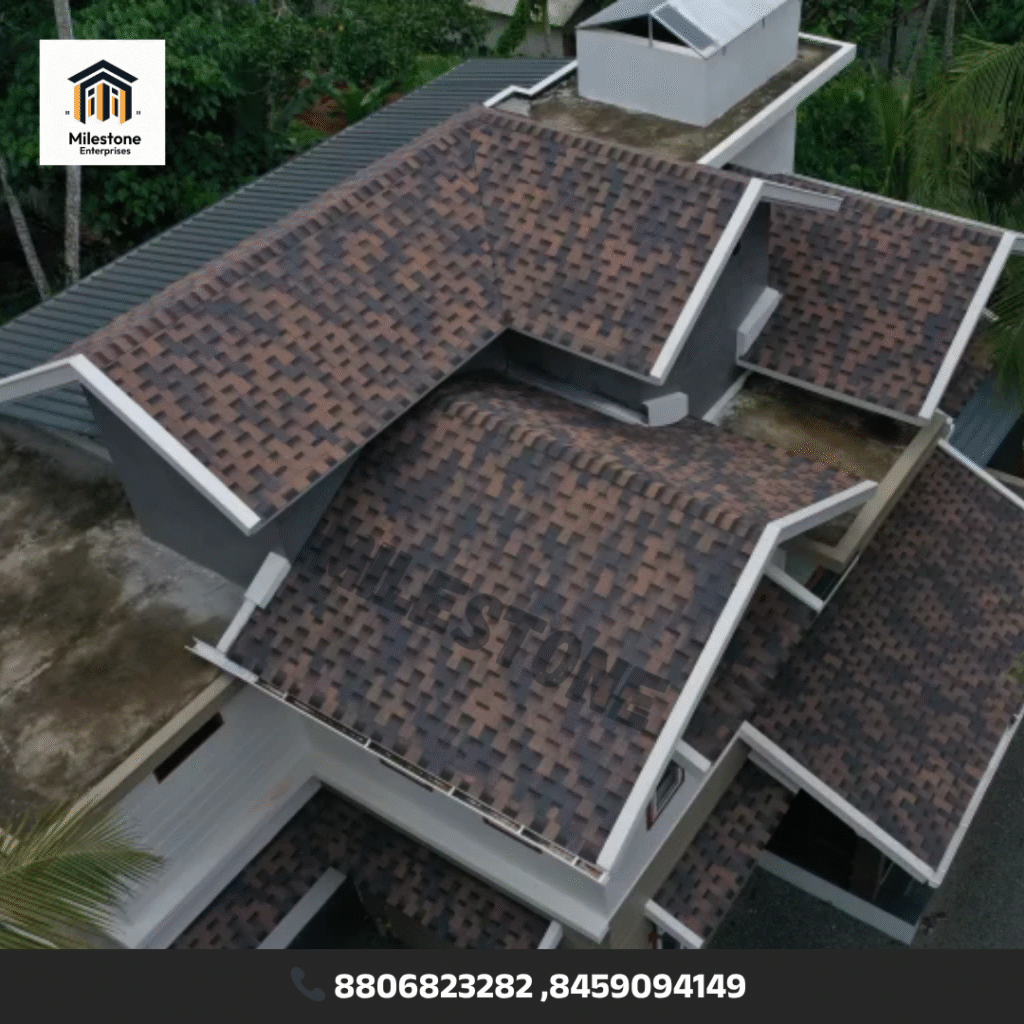🧱 What Are Asphalt Shingles?
Asphalt shingles are one of the most popular roofing materials used for residential houses.
They are made from asphalt (bitumen), fiberglass, and mineral granules, providing durability, waterproofing, and weather resistance at an affordable cost.

⚙️ Composition / How They’re Made
Base Layer (Fiberglass Mat):
A strong fiberglass or organic felt mat forms the base.
Asphalt Coating:
The mat is coated with hot asphalt, which acts as a waterproofing layer.
Mineral Granules:
Colored mineral granules are applied on top to protect against UV rays, impact, and weathering.
Cooling & Cutting:
The sheet is cooled and then cut into standard shingle shapes.
🧩 Types of Asphalt Shingles
3-Tab Shingles:
- Flat and uniform appearance.
- Most affordable type.
- Commonly used in budget-friendly homes.
Architectural (Dimensional) Shingles:
- Thicker, layered look for better design and strength.
- More durable and weather-resistant.
- Popular for modern homes.
Luxury Shingles:
- Premium-grade shingles with high-end texture and style.
- Designed to mimic slate or wood.
- Longest lifespan and best durability.

🌤️ Advantages / Benefits
✅ Cost-Effective: Cheaper than metal, tile, or slate roofs.
✅ Easy to Install: Quick and simple installation process.
✅ Weather Resistant: Protects from rain, heat, wind, and snow.
✅ Variety of Styles: Available in many colors and textures.
✅ Low Maintenance: Requires minimal upkeep.
✅ Fire Resistant: Fiberglass base provides added fire safety.

⏳ Lifespan
- 3-Tab Shingles: 30–50 years
- Architectural Shingles: 25–30 years
- Luxury Shingles: 30–50 years (with proper maintenance)
🧾 Warranty
- Most brands offer 20 to 50 years warranty.
- Premium shingles often come with a Lifetime Limited Warranty.
- Warranties usually cover defects, wind resistance, and durability.
🛠️ Installation Process
- Surface Preparation: Remove the old roof and clean the surface.
- Underlayment Installation: Apply a waterproof underlayment sheet.
- Starter Strip: Install a starter layer at the roof edge.
- Shingle Installation:
- Overlap shingles and nail them properly.
- Maintain proper alignment.
- Ridge Cap Installation: Place ridge cap shingles at the top for a finished look.


